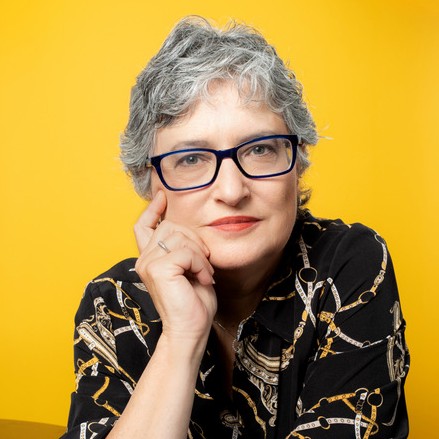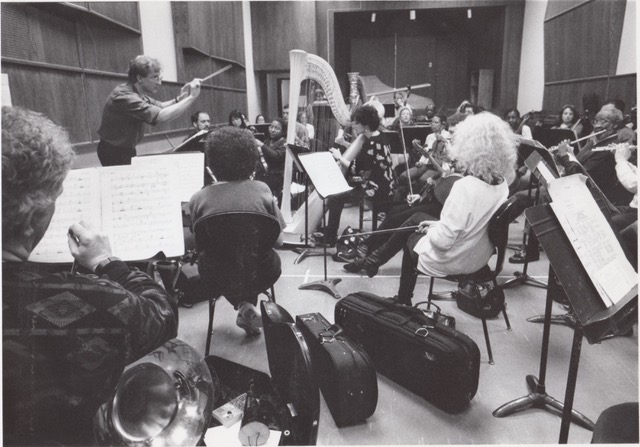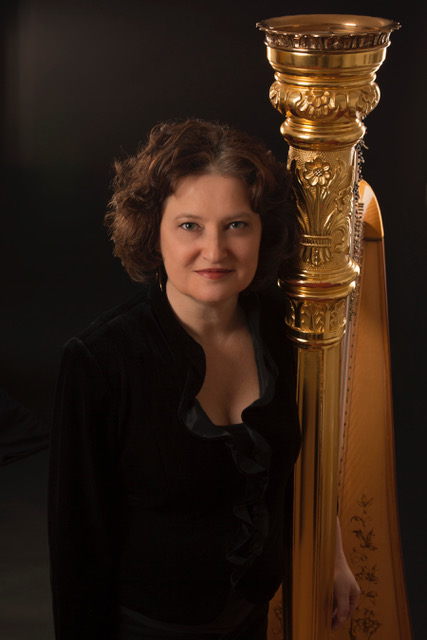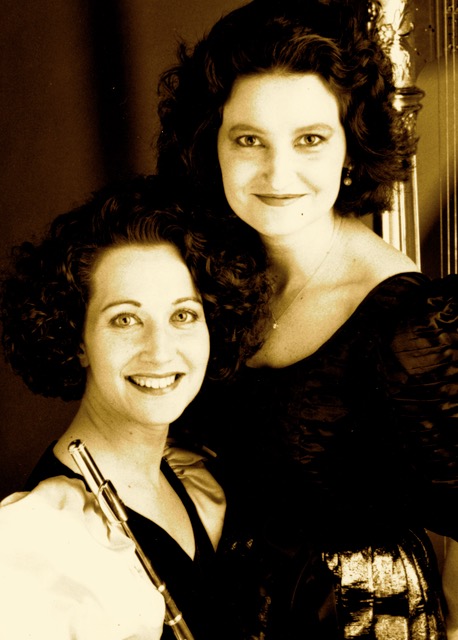Sara Cutler is the principal harpist with the New York City Ballet Orchestra, American Symphony, and Orchestra of St. Luke’s. For more than four decades, she has performed as a soloist in concertos at prestigious venues such as Lincoln Center, Carnegie Hall, the Brooklyn Academy of Music, the Kennedy Center in Washington, D.C., and the Edinburgh Festival in Scotland. Fine Art Shippers had the pleasure of interviewing Sara Cutler, who shared her thoughts with us on the essence of music, what it takes to be a musician, and why working with living composers is both challenging and rewarding.
Harpist Sara Cutler on Intuition and Her Life in Music
I'd like to start from the beginning. What made you choose the harp as your instrument? I would say it's quite different from other instruments, wouldn't you agree?
Sara Cutler: My parents were both opera fans and always played it at home, along with other classical music. As children, they took us to operas, concerts, and ballets, so I was exposed to a lot of classical music at an early age.
One day, I saw someone playing the harp and immediately announced to my parents that I wanted to play it too. I was only around four or five years old at the time, and while my parents thought it was cute, they assumed I would eventually study the piano like many children. However, I was determined to play the harp. So my parents started looking for a harp teacher and instrument for a child my age. Eventually, we found a teacher nearby, and I started taking lessons.
I’m curious to know what smaller harps for children look like.
Today, there are many smaller harps available for children, as many harpists start with a lever harp, which can be as small as a lap harp. However, these are not the same as concert harps. While smaller concert harps do exist, they can be difficult to find for small children, and my teacher at the time didn't see it as a priority.
Luckily, we moved to a new area less than a year after I started playing, and we were recommended to a world-famous harp teacher. After hearing me play, she took me on as her student and immediately recommended that I return my harp and switch to a smaller concert harp that was more suitable for my size. With her guidance, I began studying earnestly at age eight.
What kind of relationship do you have with your instrument? It’s your work, your leisure, your life. How do you feel about it?
My relationship with the harp has always been a love-hate one, and I don't think that will ever change. There are times when it's incredibly enjoyable, and I feel amazed that I can make a living doing something so fun. However, it's also incredibly difficult and requires a lot of hard work and preparation for each performance. When I used to play almost seven nights a week with rehearsals during the days, it was a lot, and the harp is a very physical instrument.
Now I'm stepping away from the performance side of the business because I have many other things on my plate. I'm playing less this year than in previous decades and enjoying that too. It's interesting not to be a full-time harpist anymore, and I like it.
You have extensive teaching experience at the Bard College Conservatory of Music and Brooklyn College Conservatory. Could you talk about your teaching methods? What is most important in truly understanding and feeling music and the harp as an instrument? Has your approach to teaching changed over the years?
That's a great question. I can teach anyone to play the harp within six months, and they could probably start performing. However, there's much more to it than just the technicalities of playing the instrument. I also have to teach my students what it means to be a professional harpist.
This includes things such as how to transport and maintain it properly, as it is a very sensitive and problematic instrument. Repair professionals may be hard to find, and most harpists need to maintain their harp between visits from the repairman. Additionally, harps need to be tuned regularly, which can be challenging to do on their own.
Beyond these technical aspects, I also try to prepare my students for life in the music industry: how to behave professionally, how to deal with unexpected situations, etc. Most importantly, my goal as a teacher is to help them feel and understand music beyond the notes.
I'm interested in hearing more about what it means to live life as a musician, specifically as a harpist. Art is not just about technical skills but about intuition in the first place. What do you teach your students about this aspect of being a musician?
Intuition cannot be taught, but we can teach our students to recognize different signifiers in various types of music. Each piece of music is unique and requires a distinct approach, sound, and technique. It's essential to have the right posture, hand position, and arm movement to avoid injury and distraction while playing the harp.
To understand different types of music, I encourage my students to attend live concerts frequently, not only classical but also rock, hip-hop, etc. Exposure to various music genres is necessary to be able to recognize and appreciate the uniqueness of each style. You also train your ear to feel the nuances of music so you may hear a piece and immediately tell whether it’s Debussy, Handel, or Britten.
It's important not only to play the notes correctly but also to understand the structure, flow, direction, and orchestration. To achieve this, it is necessary to train your brain to recognize various musical elements and comprehend them intellectually. Doing so will help you feel and convey the emotions contained in the music. Unfortunately, this aspect is often missing from education.
You have extensively premiered and performed contemporary music and commissioned works from living composers. How do you go about interpreting contemporary music, particularly pieces by living composers, and what are the specific challenges that come with that?
When working with living composers, it's easier and harder at the same time. It's easier because they are available to provide feedback throughout the rehearsing process, but harder because they may sometimes request something that cannot be done on the harp. Working with a living composer becomes a dialogue, and they are usually willing to collaborate and make adjustments to ensure a compelling interpretation. However, when a person insists on their way, the process becomes difficult and ultimately less successful. Nonetheless, it is always an interesting and rewarding experience.
You are the principal harp with the New York City Ballet Orchestra, American Symphony, and Orchestra of St. Luke’s. How does performing with each of them differ? How do performing cultures vary and how do you adjust to that?
I perform with these three main orchestras, but throughout my career, I have played with dozens, if not hundreds of them. I consider the New York City Ballet my day job because it is a year-round commitment, though we have breaks in between the four seasons. This allows me to remain a part-time member of the other two orchestras.
I began playing with the ballet forty-four years ago and have been there ever since, except for this year when I am on leave, testing out retirement. Until last year, it was a six-day-a-week work schedule with rehearsals during the day and a performance every night. The ballet has a repertoire of about 400 ballets, and nearly 350 of them include harp. This means that I am involved in almost every ballet they perform, which is a lot of repertoire.
The ballet genre is very harp-centric, so when there's a harp part, it's usually very difficult. In the early years, it was incredibly stressful trying to learn that much music. The company was smaller then, and when injuries occurred, which was often the case, the programs would change at the last minute. This meant that I had to know the entire repertoire, not just what I was expecting to play that night. Now, it doesn't matter what they put on because I've played every ballet hundreds of times over the last four decades.
Besides the New York City Ballet, I have played with Orchestra of St. Luke's for thirty years, and the American Symphony for twenty-five years. They don't perform as much, so the repertoire is smaller. We have become very close with all the musicians; it's like a work family. I was also a solo harpist for the Dance Theater of Harlem, St. Thomas Church on Fifth Avenue, and a sub for the Metropolitan Opera for ten years. I've played with all the big rock and roll acts from the 1980w to the early 2000s, from Metallica to Sting to Pat Metheny, with different ensembles. I feel blessed to have had such a diverse work history where every day could be different from the day before, and I could collaborate with completely different people.
For many years, you collaborated with flutist Linda Chesis in the Chesis/Cutler Duo. How did you meet? How did this collaboration come about? What was it like working together?
We both grew up in the suburbs of New York City, and we knew each other from participating in youth orchestras. However, we were not close friends until we both attended Yale College in the 1970s. During our undergraduate years, we rented an apartment together in New Haven and started playing music as a flute and harp duo, performing small recitals to earn money.
After graduation, Linda went to the Paris Conservatory to pursue a master's degree, and we decided to form a permanent duo together. We knew it wouldn't be a full-time job, but if we could fill our careers with flute and harp concerts, that would be great. We were successful and performed together for about 20 years, touring Europe three times a year and even performing in Japan once. We were a significant presence in the New York Chamber music scene for two decades and recorded many albums together. Our lives eventually took different paths, but we still occasionally perform together for special events.
In 2013, your method book, written as an homage to your late teacher, Lucile Lawrence, was published by Lyon and Healy Books. What inspired you to write it?
My teacher, whom I previously mentioned, was one of the greatest teachers in the world at the time, but we didn't realize it until later. She became like family, like a second grandmother to me. She was truly amazing. In the 20th century, there were two separate schools of harp playing in the United States, and she was married to the founder of one of them, Carlos Salzedo. She started as his student and then became his teaching assistant; they got married, then divorced, but she continued to teach with his method.
She co-wrote several harp methods with Salzedo in the late 1920s, 1930s, and 1940s. However, when she passed away in 2004, nothing had been written about the method for over sixty years.
Another former student of hers, Carolyn Mills, who now plays with the New Zealand Symphony, and I decided to write down what we remembered about how she taught us. We did it for ourselves, but just in case anyone else might be interested, we could share our manuscript with them.
After completing our work, we were unsure of what to do with it. I suggested self-publishing and contacted Lyon and Healy, a prestigious music store in Chicago with a division that specialized in book printing. At first, the person in charge seemed uninterested, but after a conversation, she requested the manuscript, which I promptly sent. In less than twenty minutes, she called back, asking for permission to present it at a publisher's meeting. Two months later, they released the book.
We had no expectations, but things worked out well. I have learned that it's important to do things that you believe are right or that you want to do, without expecting any specific outcome. This way, if things go well, you'll feel happy and pleasantly surprised, and if they don't, you won't be too disappointed.
Interview by Inna Logunova Photo courtesy of Sara Cutler



